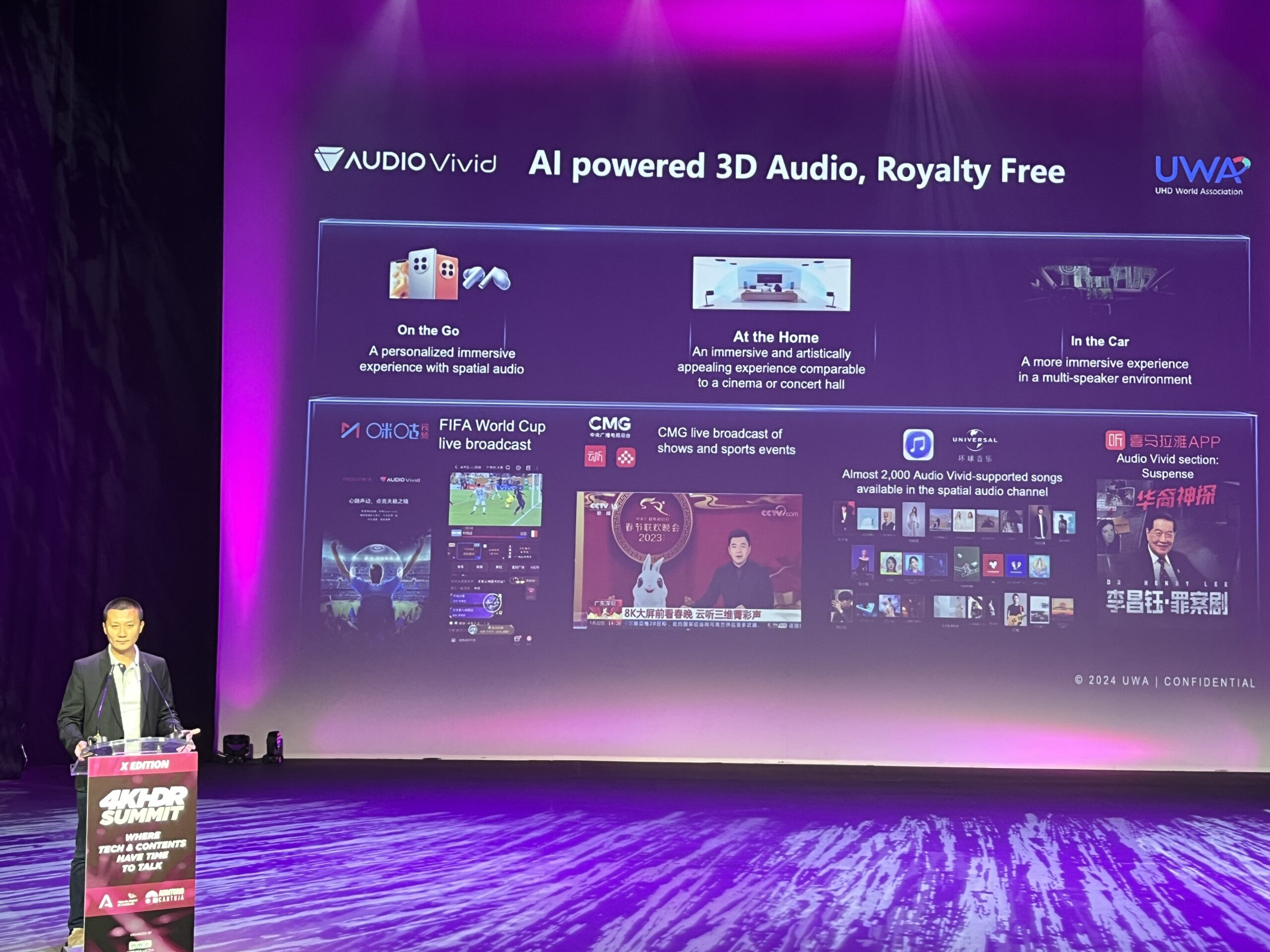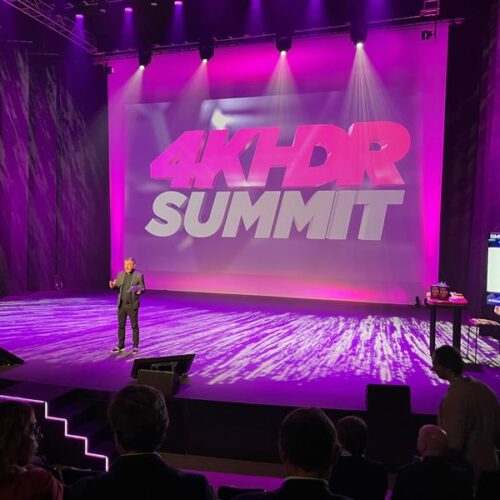4KHDR Summit Roundup

4K HDR Summit is in its tenth year! The Summit remains the main arena to discuss and learn updates across UHD, with always a special focus on media in the Spanish-speaking world.
This year there were fewer big announcements, unsurprisingly as the flagship sports events (Olympics and Euro Championships) were the natural focus of new service introductions. However, it is clear that Spain will be the driver of new UHD services and technologies in Europe. Spain has the second-largest video (TV & Movie) industry in Europe – after the UK – and it makes sense for its industry to use its domestic market to gain expertise.
Spain’s terrestrial and free-to-air services have set a long-term direction to add UHD to the mix for viewers. The strategy is to continue to invest in attractive services to retain the attention of viewers and compete against streamers. As a result, all terrestrial channels will move to HD, while three channels will operate in a UHD multiplex in DVB-T2: La1, Mediaset and Atresmedia. There is also space for a fourth UHD channel. The value of broadcasting in national life, with coverage of state events and national sporting competition, is implicit in the strategy. The UHD multiples will reach 39.1 million viewers.
The report from France revealed a reach of UHD to 74% of the population, via a dedicated multiplex. The content is also simulcast on Satellite and IPTV and includes French Overseas Territories such as French Guiana. Weekly audiences are now over 400,000, having reached around 800,000 over the Olympics. Peak Olympic UHD viewing was around 1.1 million.
Meanwhile in China, over 200 million people use Gigabit broadband connections. As a result, UHD delivery is via IPTV, which has an audience over 400 million. While content remains scarce, the Chinese government at central, provincial and local level has catalysed the formation of a UHD production chain and capable delivery to consumers. Chinese consumers also buy the largest TVs of any market, with the average TV selling in 2024 being over 60 inches. The situation in China is not all rosy, with the cost of content creation remaining an issue. A lot of the UHD content is up-scaled. Interestingly, the need for improved search and discovery was highlighted as an obstacle – consumers need to be able easily to find UHD content if it is scarce.
Sports coverage was of course highlighted. Beyond the well-covered work over the Olympics and Euros, MediaPro gave an extensive talk on the America’s Cup in Barcelona. MediaPro achieved UHD coverage with multiple cameras and feeds in real time, despite them being placed in racing boats and airborne travelling at over 80km/h! This demonstrates that even live mobile UHD coverage is now totally proven.
The next wave of UHD is likely to be in Brazil, with its TV 3.0 standard, branded as DTV+. It intends complete merger of broadcast channels with the Internet, building on the linkage started with Ginga interactivity. Launch will be in 2025, initially in major cities, with the pivotal event being coverage of the 2026 football World Cup. The TV 3.0 standard is due to be published in December 2024.

In conclusion, progress in UHD deployment is consistent, if perhaps slower than expected five or so years ago. The Olympics, Euros and America’s Cup demonstrate that UHD productions significantly enhance the experience for viewers and that highly ambitious live footage can be produced successfully. The drag on UHD remains content – the TV sets are in people’s homes, the network connectivity is established, but a compelling business model to in increase content choice remains a struggle.